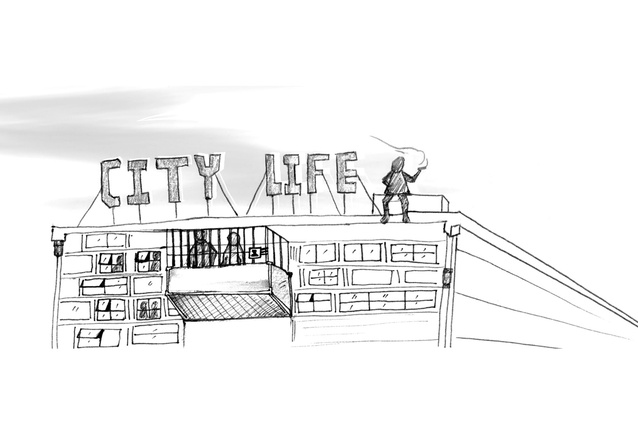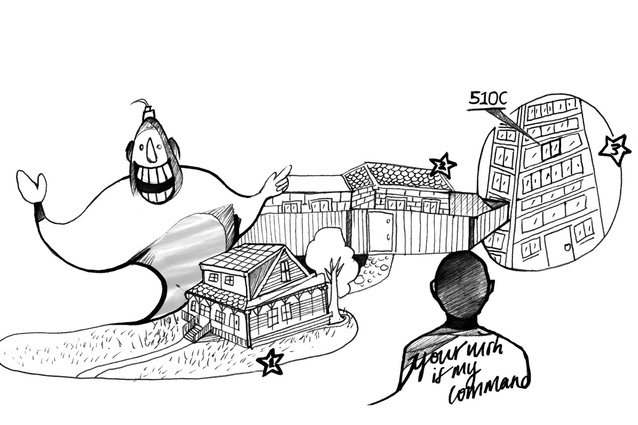Postwar flats
There is no question that over the past 50 years the way we live has been transformed. Nonetheless I can’t help but think that some of the issues we are dealing with currently have come up already in the past. It’s a kind of ‘back to the future’ story, only without the DeLorean. For instance, housing in Auckland is one such issue. The city has grown, or should one say sprawled, unhindered by concerns over the resource-hungry suburbs. Auckland is, of course, representative of New Zealand’s larger cities, in which population growth has outstripped the ability of the city to address core issues of housing quality and livebility. In the past, as today, more people has equalled more greenfield development on the outskirts of the city; often, there have been troubling consequences for the environment and its future occupants.
There are, however, promising examples of history repeating itself in good ways within this consistent drive to house the masses. A particularly good example of this is the discussion around greater density in the inner-city suburbs, which, with each successive moment in the spotlight, gains a little more traction. To be clear, greater density is not about cramming low-quality, prison-like, quarters into every nook and cranny down Hobson Street. But instead, it is an opportunity to think about how we can design housing that increases the occupants’ quality of life without endlessly burning through the countryside building cookie-cutter spec homes.
Increased-density living had a particular high point in the public consciousness after the Great Depression. The housing schemes introduced by the first Labour government aimed to address issues of overcrowding within urban areas. Buoyed by the optimistic feeling of rebirth that underpinned the development of modernism, and enabled by technological advances in construction technology, some very fine examples began to be constructed. These flats serve us today as a reminder of how good some of those postwar ideas actually were and how they delivered very fine examples of what urban living could be. Sure, not all of the modernism’s rhetoric rings true today – particularly the separation of work and living zones in the city. But there were some excellent examples of housing that provided light and air to their occupants in the city, which cannot be said about many examples of high rise apartments constructed in the ’80s and ’90s.
While these examples show us how good some of these buildings can be, if we go back a little further, we can see that Auckland architects were building interesting flats much earlier, also. These flats weren’t as tall as were those that came later on and, as such, offered housing to smaller numbers of occupants, but they still offer a mid-range-density option that is underutilised within our cities. These two and three-storeyed blocks of flats were often sited adjacent to neighbourhood shops and were skilfully designed to act as bridges between the scale of the commercial spaces and the looser grain of stand-alone housing. There are plenty of examples of this typology dating from the first half of last century but two blocks of flats that are understated Auckland exemplars are Grange Hall and Raycourt.
Grange Hall is tucked into the pocket of Mt Eden village and is a curious building at first sight. Its styling straddles Spanish mission and art deco. But, as is often the case with the slightly odd, this is where its charm resides. The flats held within are well planned and provide access to ample natural light on both sides of the building. Gardens and parking are shared and well used. And, for the most part, there seems to be a small micro community established here. It is, however, its position in relation to the Mt Eden village that demonstrates a particularly important point; if people are to be expected to live in smaller spaces, then the city must provide spaces which people can socialise in.
The acreage of a suburban living room is perfectly proportioned for that once-a-year gathering of everyone you know but, in the urban setting these events are moved into the city. And this isn’t a bad thing. Local retailers, restaurateurs and publicans all benefit from this, while these events add to the already-lively atmosphere of a place where people live their lives in a way which engages the city.
Raycourt is an art deco block of flats with similar amenities within an easy stroll of the Jervois Road shops. While Raycourt doesn’t offer quite the same outdoor space, it is still a well-proportioned, well-modelled, comfortably planned building which makes the most of its privileged site. And while each of these examples is now within one of Auckland’s most affluent suburbs, surrounded largely by detached houses, it can be said that each building plays an important role in establishing the character of its surroundings. So while the quarter-acre dream lives on for many, embedded in the national consciousness as a symbol of prosperity, architecture of a higher density has proven its worth as a viable and comfortable alternative to the detached house. Why, when this type of accommodation has been proven so successful, are housing developments often focused only on stand-alone houses miles from the nearest public amenity? Architecture of this density is appearing in only the most forward thinking of developments, while the majority continue to ignore the opportunities of higher-density living.
A friend of mine, whom I regard as a particularly fine critic of modern life, once told me that the reason suburbia is so popular is because “it’s so bloody good”. In his opinion, it offered comforts that were, to a great extent, never available to the masses before and this may well still be the motivation towards the stand-alone house as a fundamental building block of urban (outward) growth. But this opinion also highlights the fact that, as prices rise exponentially, the suburban dream is not the accessible wonder it once was. As an idea, and a spatial reality, it is increasingly out of reach for many. There is a need for us to look back at what other forms, suited to our continued challenges, exist and how these examples can be mined for future forms.











